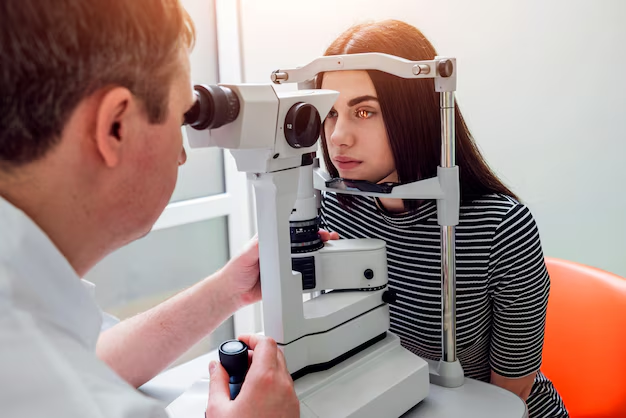Unveiling the Mystery: What Causes Cataracts in Humans?
Cataracts are a common eye condition that affects the clarity of vision as they cloud the lens of the eye, making it difficult to see clearly. While they are often associated with aging, cataracts can arise from various causes that are sometimes overlooked. Understanding these causes is key to recognizing risk factors and potentially delaying the onset of this condition.
🌟 The Basics of Cataracts
Before diving into what causes cataracts, it’s essential to understand what they are. A cataract is essentially a clouding of the lens in the eye that leads to a decrease in vision. The lens, located behind the pupil and the colored part of the eye (iris), becomes less transparent over time. This can make activities such as reading, driving, or even recognizing faces challenging.
Common Symptoms
- Blurry Vision: A gradual decline in clarity.
- Faded Colors: Colors may appear less vibrant than before.
- Increased Sensitivity to Light: Bright lights or sunlight might seem more intense, sometimes causing discomfort or glare.
- Night Vision Difficulty: Challenges in seeing at night or in low-light conditions.
- Frequent Prescription Changes: Needing new eyeglasses or contact prescriptions more often.
🔍 Exploring the Causes of Cataracts
Cataracts develop when proteins in the lens form clumps, reducing the transmission of clear images to the retina. But what triggers this clouding? Let’s explore the primary causes.
Age: The Universal Factor
The most prevalent cause of cataracts is aging. As people grow older, changes in the eye’s lens progress naturally. The proteins within the lens break down and clump together, starting to cloud the lens and diminish vision.
Genetic Predispositions
While environmental factors play a significant role, genetics can also be influential. Some individuals may be predisposed to developing cataracts at an earlier age than others due to their genetic makeup.
Lifestyle and Environmental Factors
Ultraviolet (UV) Exposure: Prolonged exposure to UV rays from the sun is a known risk factor that can accelerate cataract formation. Using sunglasses that block UV rays can mitigate this risk.
Diet and Nutrition: Antioxidants found in fruits and vegetables can decrease the risk, whereas a poor diet deficient in these nutrients may contribute to cataract development.
Smoking and Alcohol: Both smoking and excessive alcohol consumption increase the risk of cataracts. Smoking, in particular, releases chemicals that damage the lens proteins, while alcohol impacts overall eye health.
Medical Conditions and Medications
Diabetes: The risk of cataracts is notably higher among individuals with diabetes due to increased blood sugar levels that can affect lens clarity.
Hypertension and Obesity: These conditions contribute to several eye health issues and can exacerbate cataract progression.
Medications: Prolonged use of corticosteroids and certain medications can increase the likelihood of cataract formation.
Eye Injuries and Past Surgeries
Eye trauma or injury can cause cataracts by disrupting the normal lens tissue. Additionally, some past eye surgeries might elevate the risk of developing cataracts.
👩⚕️ Prevention and Management
While not all cataracts can be prevented, certain lifestyle choices and management strategies can decrease the risk or slow their progression.
Key Preventative Steps
Protect Your Eyes: Wearing sunglasses with UV protection, hats, or visors can defend your eyes from harmful rays.
Healthy Diet: Consume plenty of fruits, vegetables, and omega-3 rich foods to support eye health.
Quit Smoking: This lifestyle choice can significantly reduce the risk of cataracts and improve overall health.
Manage Health Conditions: Proper management of diabetes, hypertension, and other chronic conditions is crucial.
Regular Eye Exams: Early detection through routine check-ups can catch problems before they progress significantly.
📊 Summary of Key Takeaways
Here's a quick cheat sheet to the main causes and prevention tips for cataracts:
| Cause/Factor | Description |
|---|---|
| Aging | Natural protein breakdown in the lens as people age. |
| UV Exposure | Prolonged contact with UV rays from the sun. |
| Smoking & Alcohol | Chemicals from smoking damage lens proteins; alcohol impacts eye health. |
| Diabetes | Higher blood sugar levels affect lens clarity. |
| Eye Injuries | Trauma leads to disruption in lens tissue. |
| Medications | Long-term use of certain drugs can lead to cataracts. |
| Genetics | Inherited tendencies for early cataract development. |
Prevention Tips:
- Wear UV-protective sunglasses 🕶️
- Maintain a healthy diet rich in vitamins and antioxidants 🥦
- Quit smoking 🚭 and limit alcohol intake 🍷
- Manage health conditions like diabetes 💊
- Schedule regular eye examinations to monitor eye health 👁️
💡 Closing Insight
Understanding the various causes of cataracts highlights the importance of proactive eye care. While aging is an inevitable factor, lifestyle choices, genetic predispositions, and environmental exposures collectively shape eye health. By adopting preventative measures, regular check-ups, and a conscious lifestyle, individuals can enhance their eye health, potentially delaying the onset of cataracts.
In essence, awareness and early intervention are empowering tools for managing the risk of cataracts. Through informed choices and a commitment to overall well-being, clearer vision can be maintained for a more vibrant, engaged life.
